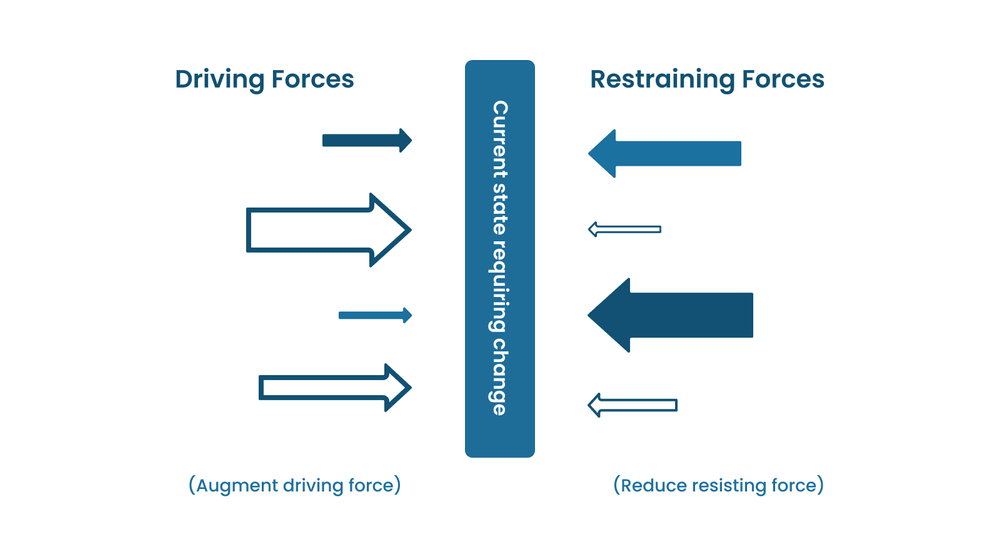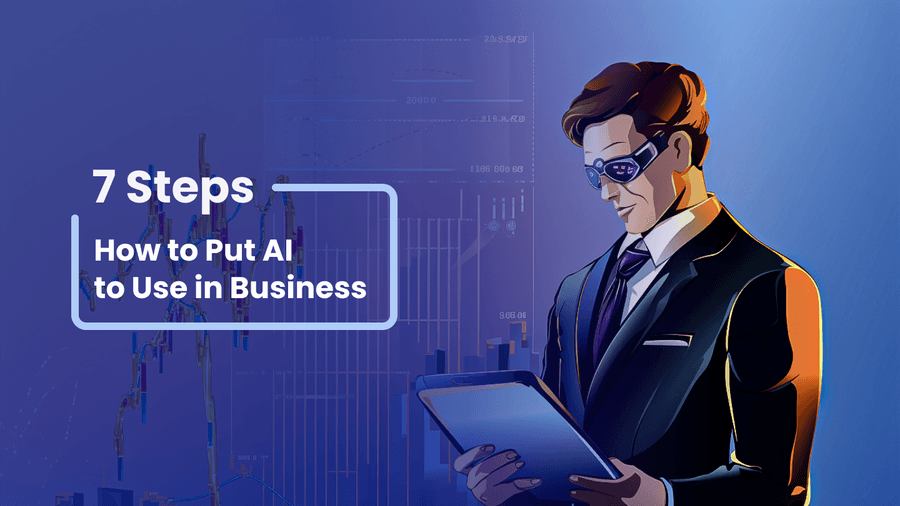We’re not going to extol the virtues of artificial intelligence. You can hear them from every direction. Let’s get straight to the practical side of the issue.
How Can AI Help My Business?
In this article, we’ll use the term ‘AI’ to refer to all the technologies that make up the field. If you would like to learn more about them, check out this guide first.
Learn more: Your Guide 2024 to Machine Learning. Finally Get It.
Let’s see what AI can do for your company.
Take Care of Tedious Tasks
Let’s be honest, not many employees fancy doing administrative tasks. It takes plenty of time, energy, and other resources. Yet, they are necessary.
Using artificial intelligence is a win-win for both people and businesses.
For example, RPA (Robotic Process Automation) platforms can automate tasks like scheduling, data entry, report generation, and other assignments for you.
They also provide real-time monitoring, data synchronization, and email notifications.
Don’t worry, it’s not quantity over quality. You can have both, as AI improves task accuracy by learning from data patterns.
As a result, your employees’ creativity and overall effectiveness will be increased.
According to Deloitte, digitally mature enterprises see a 4.3% ROI for their artificial intelligence projects in just 1.2 years after launch.
Improve Customer Experience
AI is a powerful tool for creating personalized offers. This is because of its algorithms.
AI assistants can analyze and forecast customer behavior, which helps businesses make smarter decisions.
Also, you’ve probably seen chatbots and virtual assistants that respond to website visitors instantly.
Chatbot technology is often used for common or frequently asked questions. Yet, companies can also implement AI to answer specific inquiries regarding their products, services, etc.
In general, having an AI assistant that works 24/7 saves customers’ time and improves their overall experience.
Assist in Analytics
AI is fully capable of producing sales forecasts and efficient predictive analytics.
It can analyze market tendencies, competitors’ strengths and weaknesses, and customer feedback.
Having an assistant that can work with a wealth of data ensures time-saving, in addition to better decision-making.
Handle Tasks That Programming Won’t
As AI goes beyond the limitations of traditional programming, it will help when old-school development is too tedious, costly, or unable to provide acceptable results.
Artificial intelligence allows businesses to deal with non-standard issues due to its flexibility.
What’s more, its uses are pretty creative. You can see them in a variety of industries.
For example, optimization of warehouses and equipment maintenance in logistics, creating a speech correction assistant, music play automated evaluation, and many more.
It can make your innovative idea a reality, if you give it a try.
AI-driven solutions also fuel creative ideas in education. AI assistants and tools can help personalize learning paths, promote greater engagement, communicate with students considering different ages and abilities, and more.
Steps to implement AI in your business
There is nothing wrong with keeping up with trends. Yet, progress solely for the sake of progress seems a poor business strategy.
To integrate AI into business efficiently, we recommend following these simple steps.
Step 1. Pinpoint Your Specific Business Needs & Goals
Take a closer look at your current business processes. What areas work well, could use improvement, or leave much to be desired?
Which process is a stumbling block for your employees? What can be done to improve customer service?
Which process takes a lot of time, money, and other resources?
A great tool to use for assessment is Force Field Analysis.
Basically, you should oppose forces that are driving change (e.g., a better customer experience) to restraining ones (e.g., high costs).
It’s essential to evaluate not only AI capabilities and limitations but also your internal readiness for tech adoption.

You can also use templates for assessments. Translating pros and cons into numbers may help you see the situation more clearly.

Step 2. Choose the AI Solution & Provider
Once you evaluate your business needs and budget, it’s much easier to pick the best AI solution.
Research available AI tools, and explore their flexibility, scalability, level of customization, and integration.
Analyze potential vendors’ expertise, reputation, and experience.
Examine regulatory compliance and security measures, as well as support offerings.
Step 3. Prepare the Data
AI systems’ success relies on high-quality data for training. To ensure this, gather more data or improve existing sources.
To complete this step, an experienced AI provider is often required. A team of experts will use techniques like data cleaning and preprocessing to ensure accuracy and spot potential issues.
As far as the business side is concerned, you only have to gather data and provide annotations to your vendors (often optional).
Following this step will maximize the effectiveness of your AI solution and improve business outcomes.
Step 4. Develop an Implementation Strategy
Like any other implementation project, AI adoption requires planning.
Set deadlines, milestones, and specific requirements. Find out potential threats, challenges, and data privacy regulations.
Assign responsibilities to team members (data scientists, ML engineers, etc) and discuss everything with them.
If your team lacks some necessary experience, consider partnering with vendors, ordering artificial intelligence consulting services, or outsourcing external talents.
Step 5. Ensure the Smooth Integration
After selecting the best AI solution and gathering data, your model will be trained to identify trends and provide accurate predictions.
Collaborate with data scientists and AI specialists for dependable results.
The AI model will be integrated into your company’s operations after training and testing it.
To complete it efficiently, your existing systems and procedures might require adjustments.
Therefore, a smooth transition to AI operations is impossible without interaction with important stakeholders and other necessary assistance.
Step 6. Set Guidelines & Protocols
A comprehensive data security and privacy policy, defining the scope of AI applications, and assessing judgments are crucial to maximizing AI’s benefits and reducing its risks.
Review and update these rules regularly, ensuring compliance with emerging technology and business requirements.
Step 7. Assess AI Performance
After implementing AI in your company, you should continuously check on its performance.
This is to make sure it operates well and produces the desired results.
To assess the effect of AI on your company, set up KPIs that correspond with your goals. For example, cost savings, better customer service, or enhanced business growth.
Analyze the data on a regular basis and identify problems and possible areas for development.
Conclusion
Implementing AI in business has incredible potential, but success requires careful strategy and execution. Moreover, AI models should be continuously enhanced and improved to gain a competitive advantage.
Hopefully, this guide will be helpful along the way. Moreover, our team of experts can make it a walk in the park for you. Feel free to get in touch.




